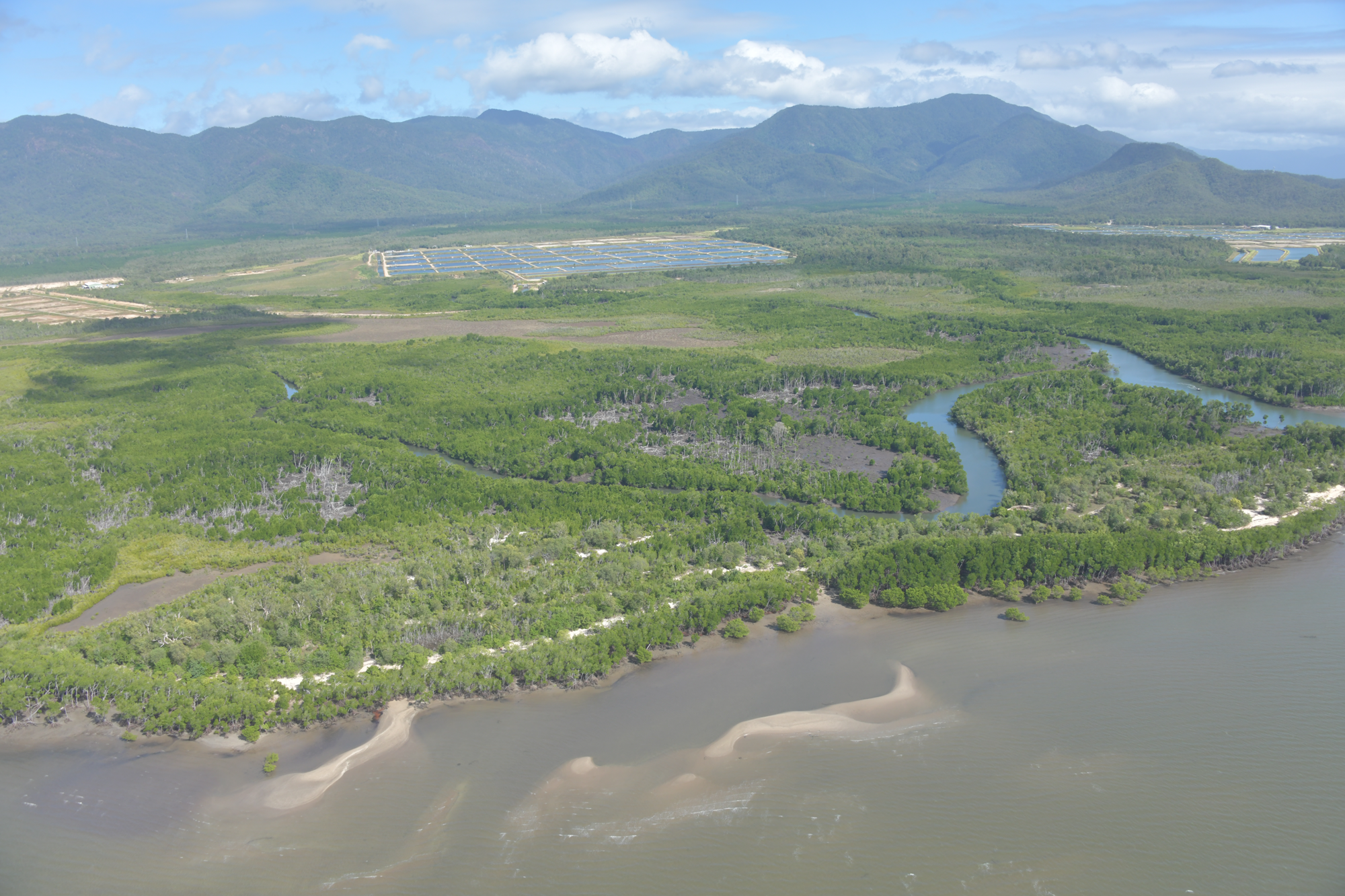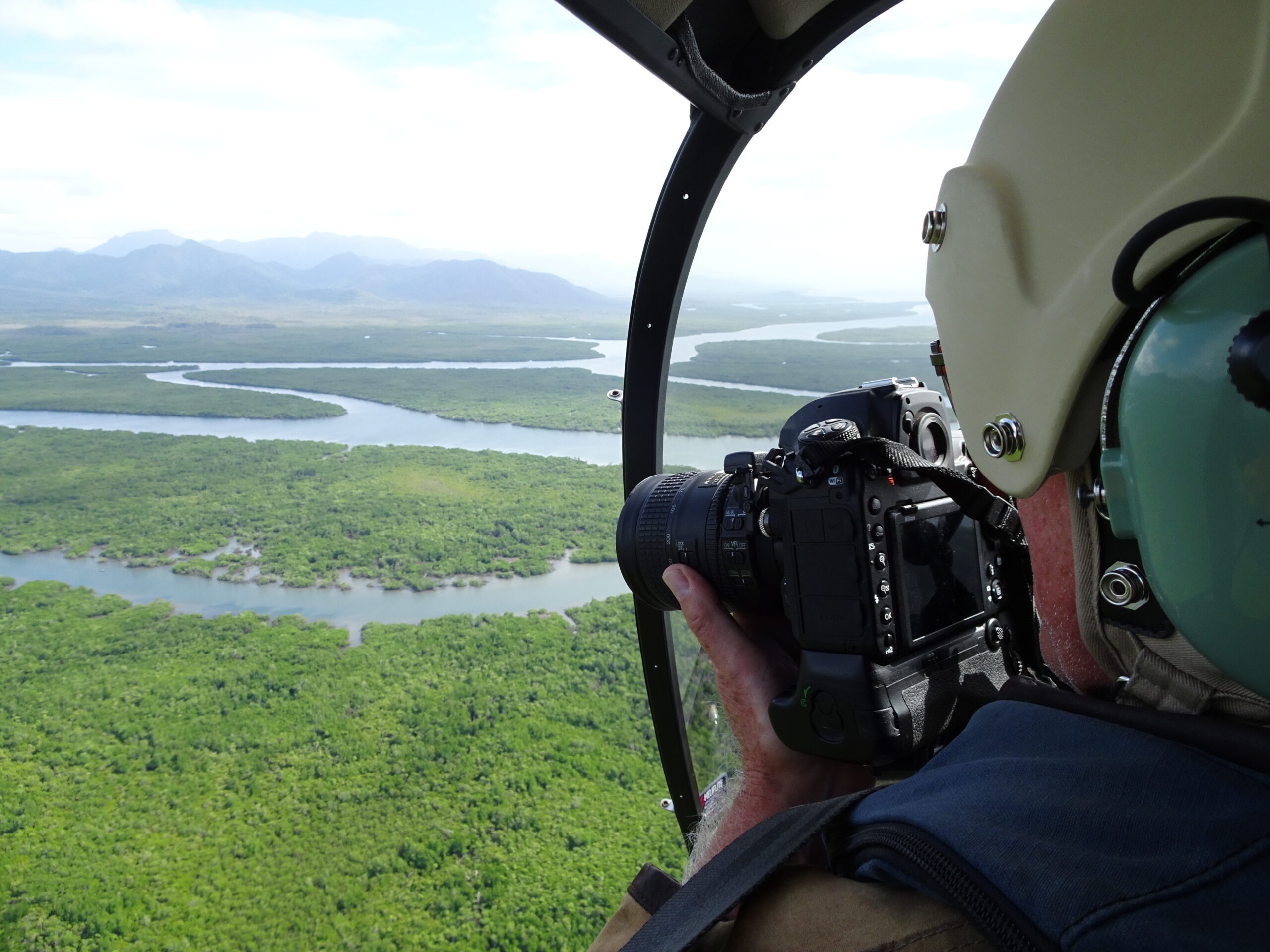Mangroves are nature’s blue carbon powerhouses – capable of capturing and storing significant amounts of carbon – making them a vital tool in mitigating the climate crisis.
They’re also biodiversity hotspots that provide essential breeding grounds for native fish, while stabilising coastline ecosystems and reducing erosion.
But the state of mangrove habitats along the Great Barrier Reef coastline is a growing concern, and until now, knowing if and where we can restore lost forests has remained unanswered.
Funded through Greening Australia’s Reef Aid program, as part of the Blue Carbon Initiative, a team of James Cook University TropWATER scientists have taken to the skies, conducting helicopter shoreline surveys from Cairns to Gladstone.
With a bird’s-eye view, the team assessed the health of these vital shoreline ecosystems, including both forest loss and gain and their continued threats. At the same time, they identified potential sites for restoration and registration as Carbon Projects under the Clean Energy Regulator’s recently released Tidal Restoration of Blue Carbon Ecosystems method.
Shoreline transformation: the condition of mangrove forests along the Great Barrier Reef coastline
Over 80,000 high-resolution geo-referenced photographs were captured during the surveys, providing a crucial baseline of the Great Barrier Reef shoreline condition and a profound insight into what’s being lost.
Lead JCU researcher Professor Norm Duke said the stretch of coastline, with its distinctive blend of wet and dry tropic climatic areas, had not been surveyed to this extent before and early results show vast damage.
“Our observations provide clear, unequivocal and quantifiable evidence of changes to this increasingly dynamic shoreline,” he said.
“We can see the impact of severe tropical cyclones that have battered the region over the past four decades. We can also see extensive shoreline tree loss from erosion, coupled with scouring erosion of salt pans, and retreat of terrestrial shorelines.
“These are thought to be widespread evidence of rising sea levels.”
Dr Duke said observations were consistent with local records of sea level rise over the last half century of at least 4mm per year.
“We believe these changes must be monitored on a regular basis so that we can both manage the impacts, improve the resilience of shoreline marine ecosystems, and guide effective adaptation to the inevitable altered coastal areas.”
Can we restore mangrove habitats along the Great Barrier Reef coastline?
While it’s possible to restore some parts of coastal shorelines, Dr Duke says it’s not the complete answer to the climate crisis for shorelines.
“This project is allowing us to identify locations for restoration of tidal wetland habitats and their capacity to sequester and store carbon – which could help reduce one of the key drivers of global climate change,” he said.
“But our assessments reveal forces at play are far more widespread and active, and simply planting mangroves is not the answer to the climate crisis.”
Dr Duke said there needs to be greater effort into building greater resilience into shorelines, including the repair of damaged areas, and targeted planning for coastal zones to adapt and retreat.
“The complexity of such a response cannot be underestimated, but if we don’t anticipate the inevitable and predictable changes coming our way, then we will be faced with one damaging shoreline disaster after another.”
“As a smart society, if we move quickly, we can be climate change entrepreneurs instead of its ignorant victims.”
Dr Duke said building resilience allows mangroves to migrate upland to survive. This includes providing supratidal buffer zones for the upland migration of mangrove seedlings by controlling things like fires along shoreline edges, removal of smothering weeds, eradication of routing feral pigs, combined with targeted mitigation like the removal of non-essential constructed bund barriers.
Greening Australia’s Director of Reef Aid Dr Lynise Wearne said the project is an exciting opportunity to understand the priorities and opportunities for coastal restoration across the Reef Catchments as Greening Australia pioneers innovative nature-based solutions that benefit communities, economies and the environment.
The shoreline surveys were conducted in May 2023, and scientists will produce a detailed report later this year.


